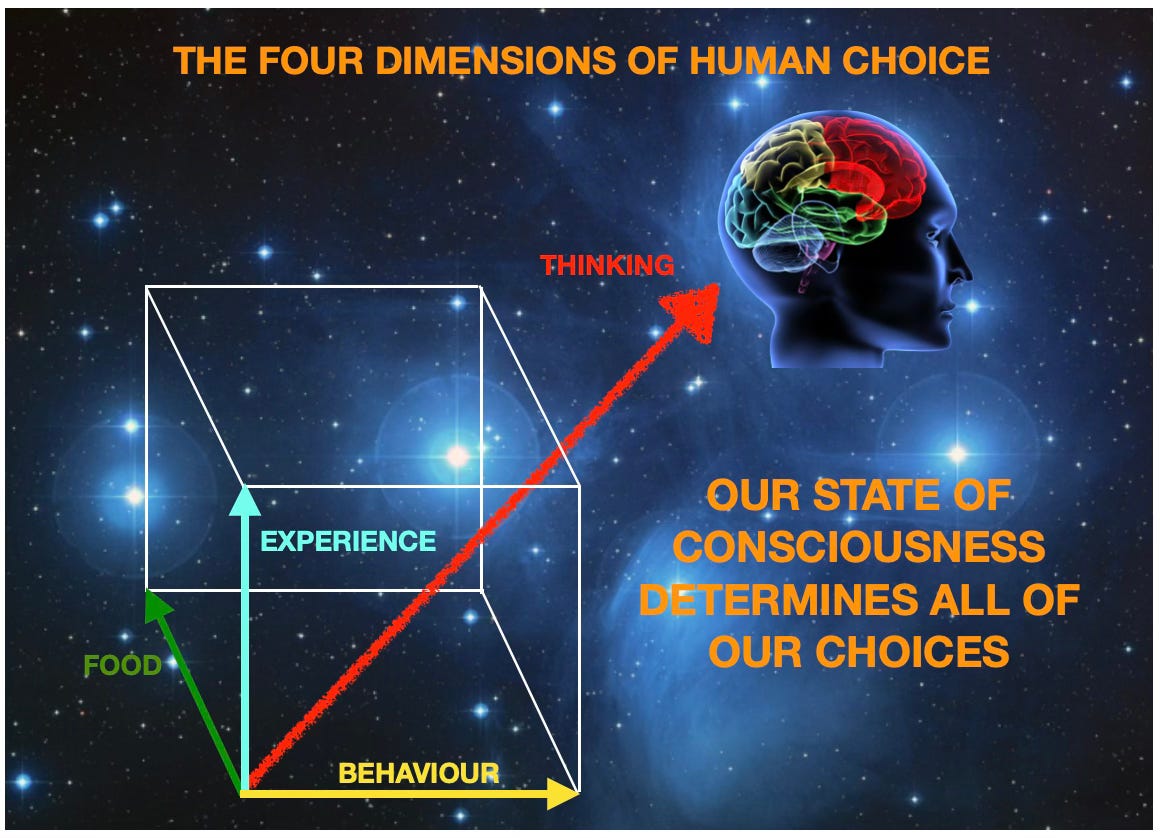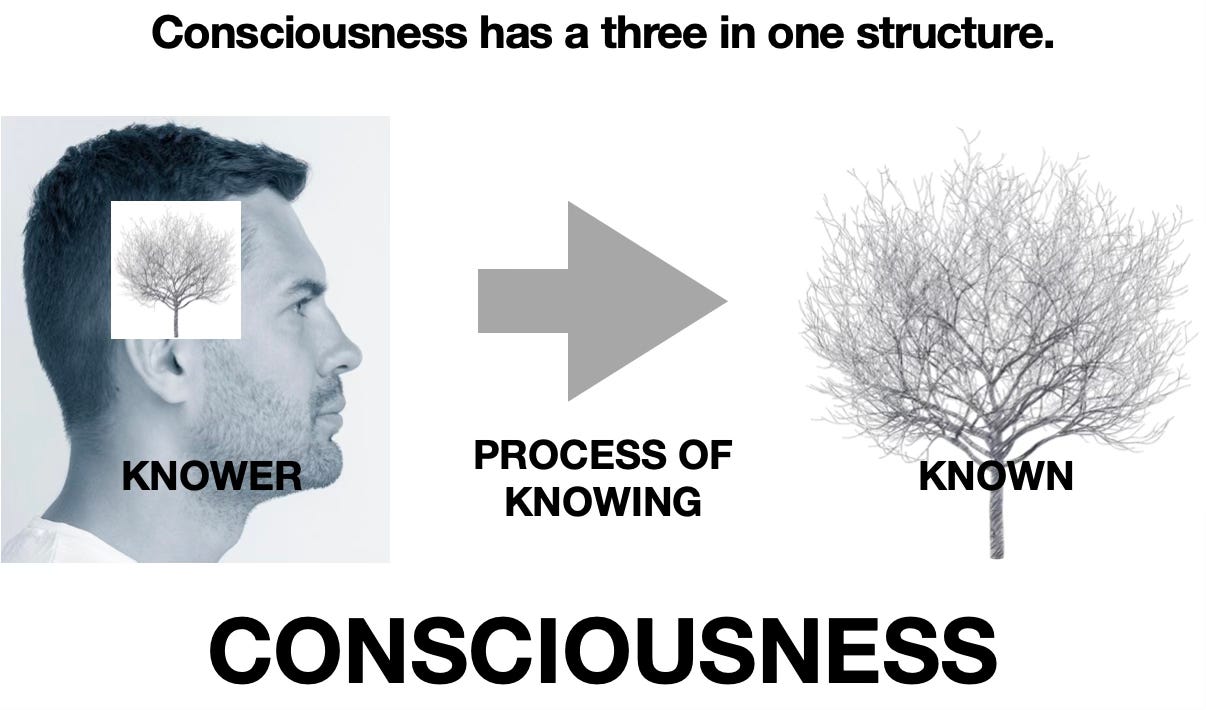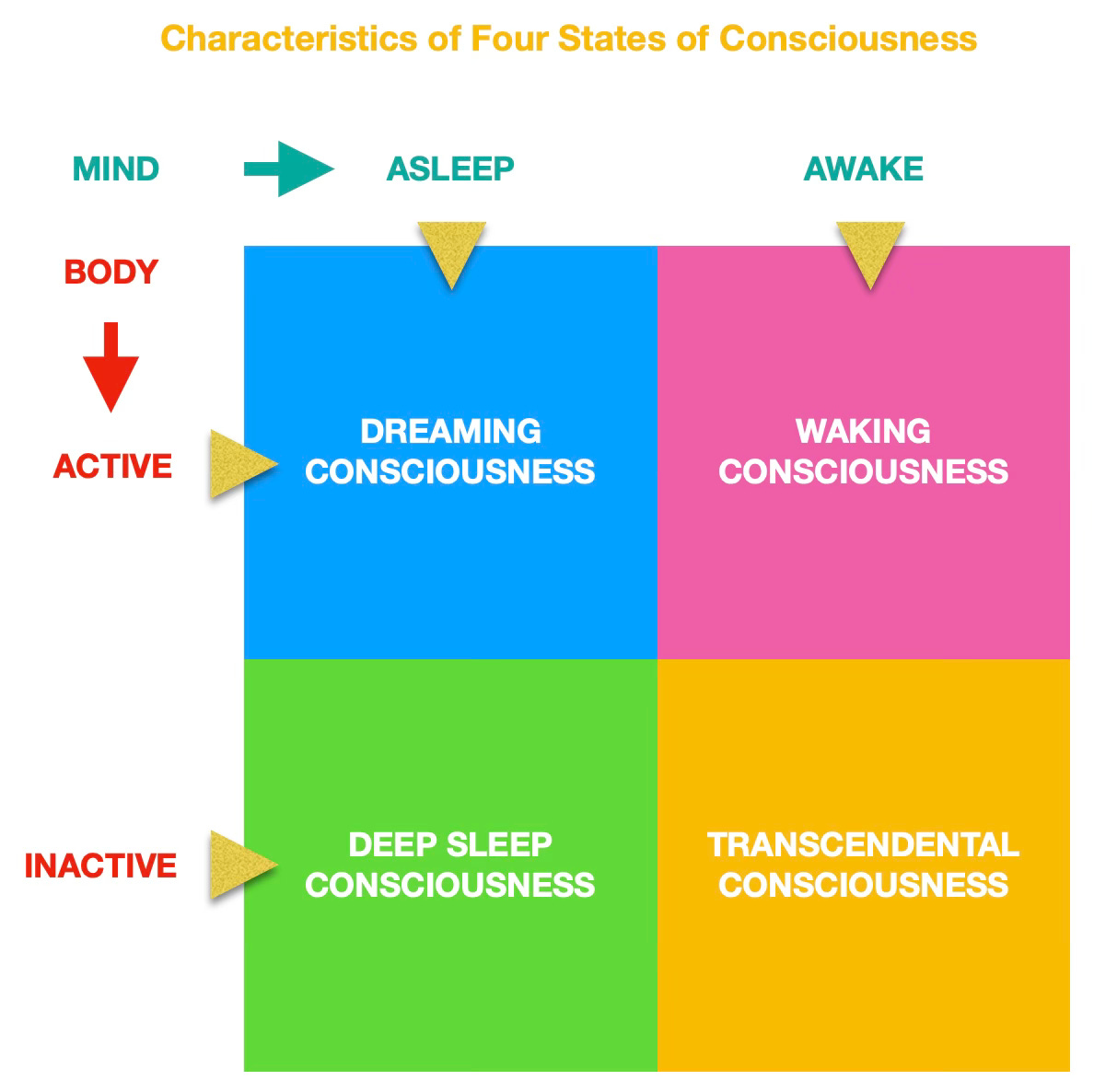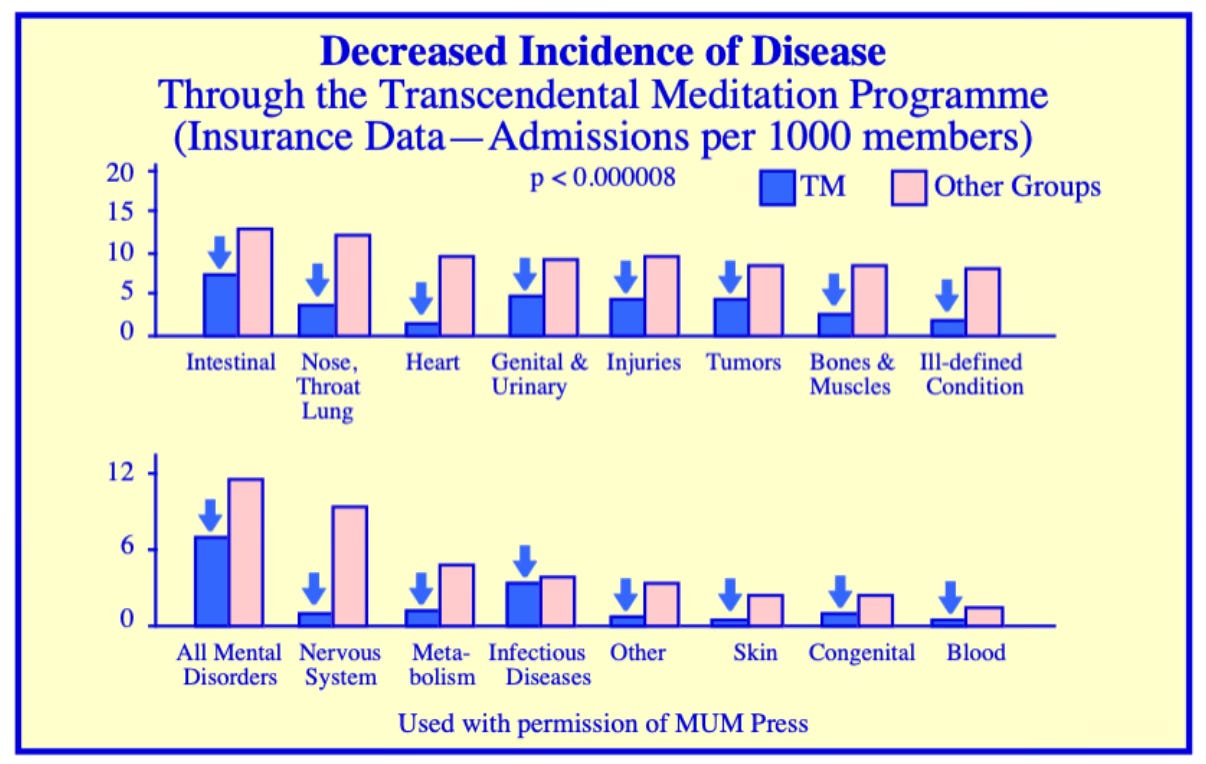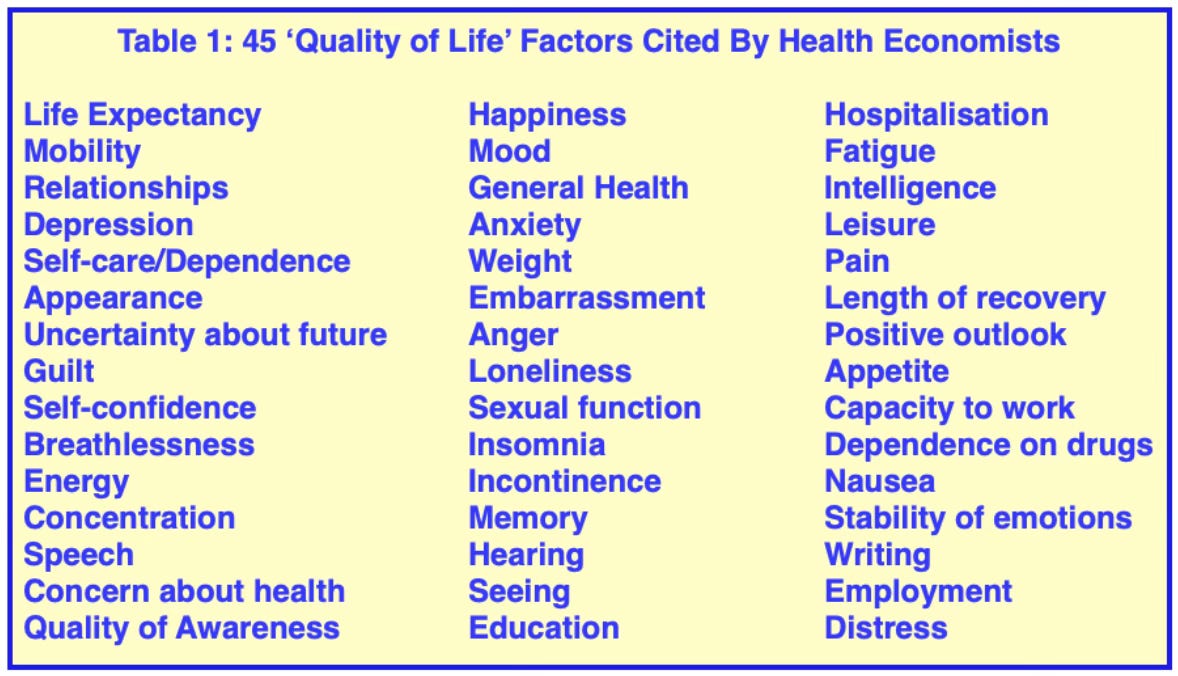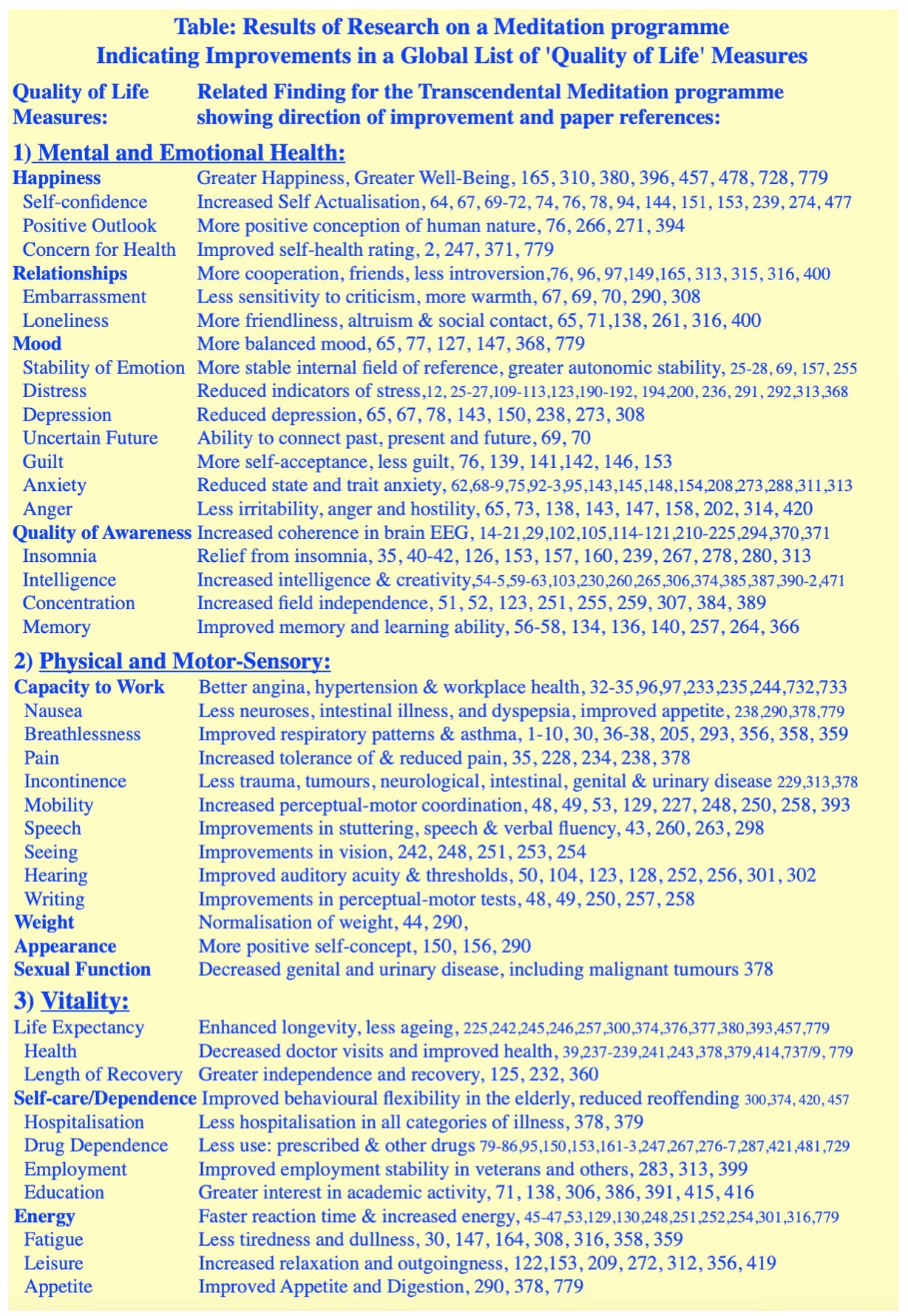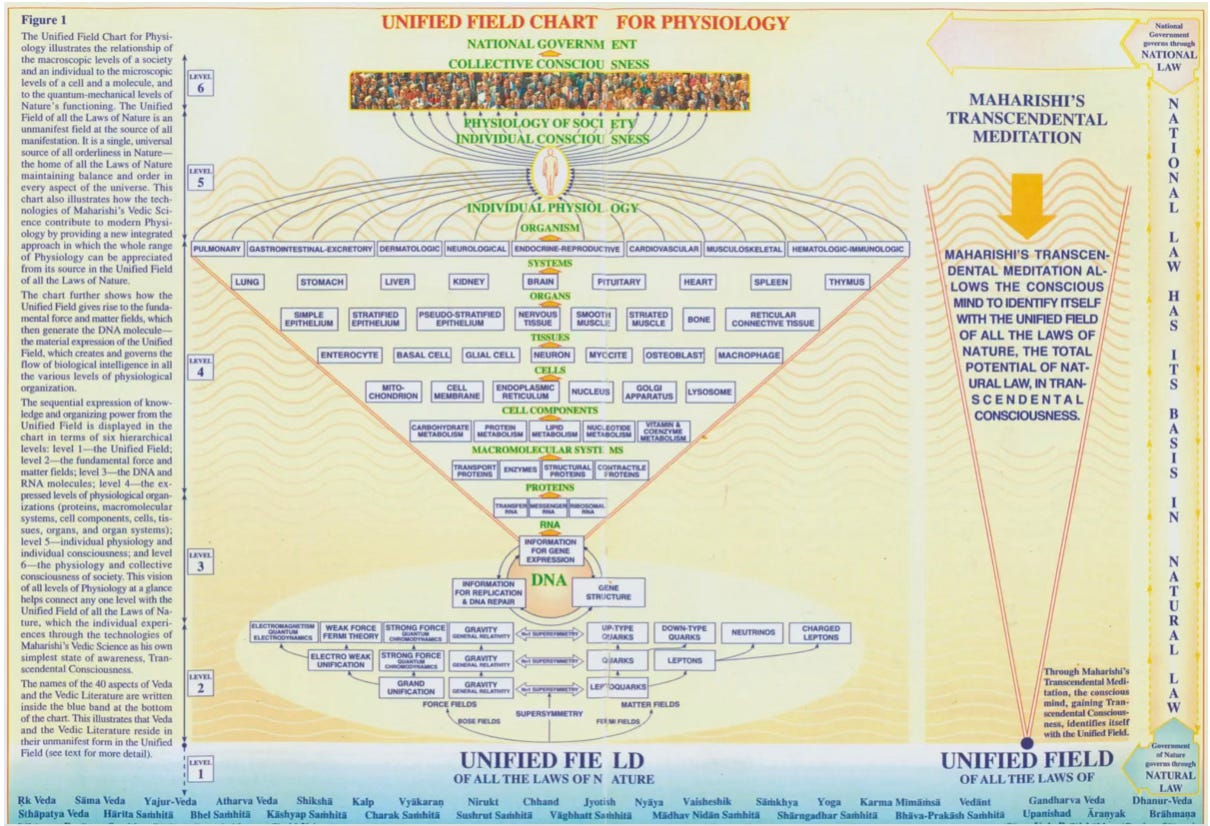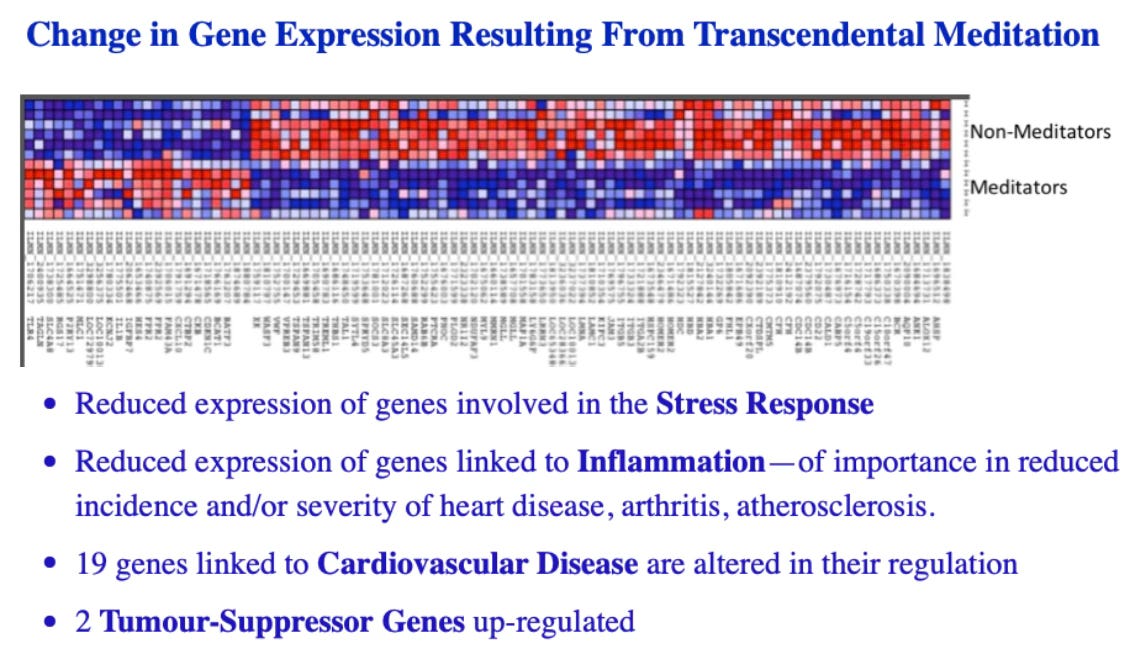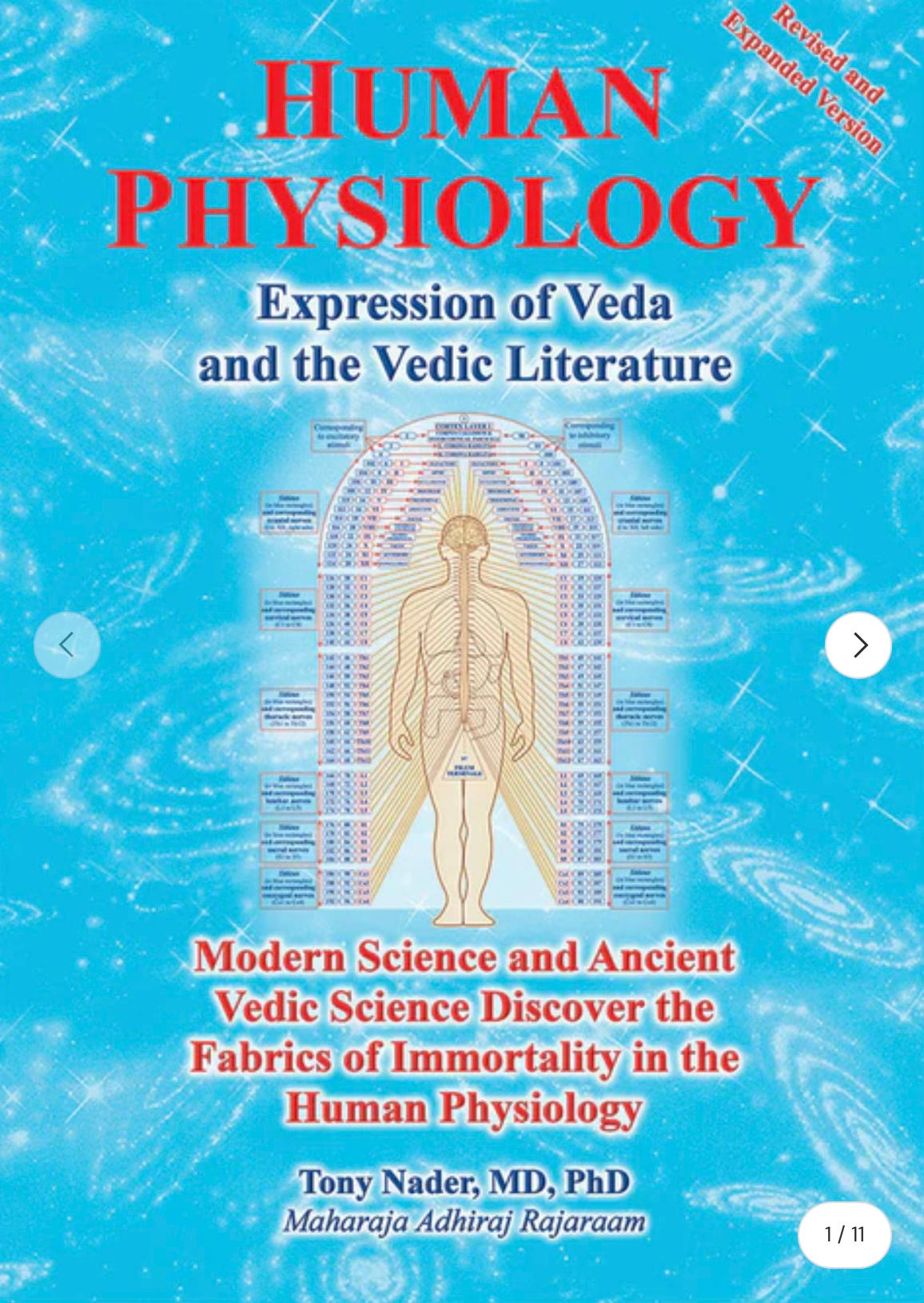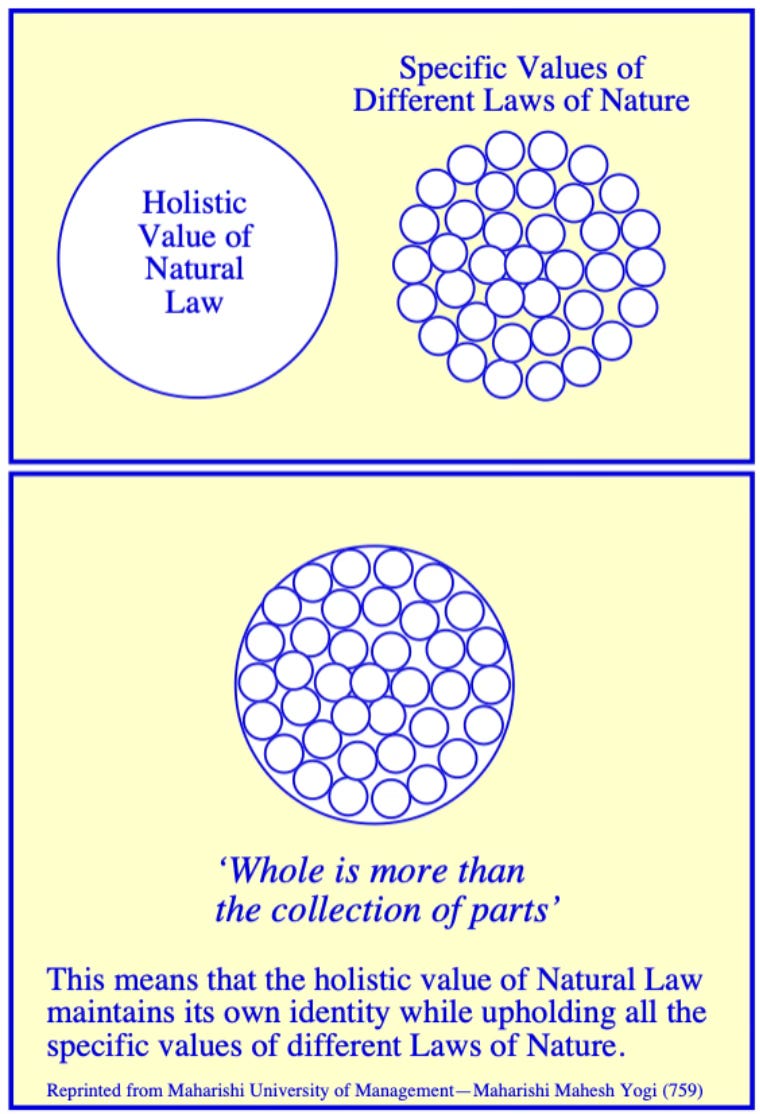Part Two The Long Read: Twenty Reasons to Completely Reject Biotechnology Experimentation : Consciousness-Based Alternatives
Part one established the inevitable serious risk from biotechnology experimentation. Part two asks what are the alternatives to maintain health and well being?
This article introduces a new paradigm for biology supported by the ancient health science of Ayurveda—literally ‘the knowledge of longevity’—a branch of the extensive class of Vedic Literature.
The innumerable decisions we make at the interface between consciousness and matter determine our future course. At this mind/body interface there are four factors over which we can exercise choice: experience, behaviour, food and thinking. The key to all of our choices lies in the state of our Being.
Consciousness
The defining characteristic of life is awareness or consciousness. We are awake—we remember, we experience, we decide, we act, we eat. Ayurveda identifies the primary cause of illness as the loss of universal consciousness. This is referred to as pragyaparad, the mistake of the intellect. This happens when the object of attention overshadows our self awareness.
Consciousness is the fulcrum point upon which our future turns. Our everyday personal experience of being awake shows that consciousness is not an epiphenomenon of matter, consciousness is primary in everyone’s life, matter is secondary. Any approach to understanding or enhancing our life experience, health and well being must begin with consciousness.
The eternal structure of life is the togetherness of knower, process of knowing and known, or the unity of observer, process of observation and observed. Referred to in Vedic literature as the Samhita of Rishi, Devata and Chhandas According to Ayurveda, disease arises because the true nature of the knower, the self, is overshadowed by the object of perception when it falls on the screen of the mind. This is often referred to as identification. Therefore to be wholly complete, any paradigm of biology and health must encompass the expansion of consciousness. This is not a side issue, consciousness must be centre stage in any understanding of life and any promotion of health.
We are familiar with three states of consciousness: waking, dreaming and deep sleep. These states of consciousness relate to our experience, their quality depends on how awake we are, how refreshed we are, or alternatively how drowsy we are. As such, they are relative states of consciousness, they exist relative to changing circumstances and perceptions. Each state of consciousness is supported by a distinctly different and measurable style of physiological functioning.
In waking consciousness the absolute nature of consciousness, as opposed to its relative expressions, is overshadowed by our experience. We see the tree, but the nature of the knower itself is covered by the object of experience. The remedy for this situation is not to try to avoid identification which is a natural part of waking consciousness which cannot be suppressed, but to engage in a practice of meditation which leads to the experience of universal consciousness.
This is a fourth state of consciousness: transcendental consciousness, in which the mind is fully awake, but without external experience. Transcendental consciousness is a unique fourth state of consciousness characterised by restful alertness. Hundreds of studies have shown the experience is accompanied by deep physiological rest measured by lowered metabolic rate, heart rate and breath rate along with EEG patterns indicative of high alertness. Subjectively, the mind is completely at peace in an expanded, self-sufficient state of awareness but without any boundaries of external perception.
A 1987 field study entitled “Medical care utilization and the transcendental meditation program compared the medical insurance utilisation statistics of 2000 practitioners of transcendental meditation to a normative database of 600,000 people enrolled in the same scheme. The study found that
"The benefits, deductible, coinsurance terms, and distribution by gender of the TM group were very similar to the norm, yet the TM group had lower medical utilisation rates in all categories. Inpatient days per 1000 by age category were 50.2% fewer than the norm for children (0-18), 50.1% fewer for young adults (19-39), and 69.4% fewer for older adults (40+). Outpatient visits per 1000 for the same age categories were, respectively, 46.8%, 54.7%, and 73.7% fewer. When compared with five other health insurance groups of similar size and professional membership, the TM group had 53.3% fewer inpatient admissions per 1000 and 44.4% fewer outpatient visits per 1000. Admissions per 1000 were lower for the TM group than the norm for all of 17 major medical treatment categories, including 55.4% less for benign and malignant tumours 87.3% less for heart disease, 30.4% less for all infectious diseases, 30.6% less for all mental disorders, and 87.3% less for diseases of the nervous system. However, the TM group's admission rates for childbirth were similar to the norm.”
The effect size of meditation on health conditions is very large compared to drug therapies. For example regular meditation may be thirty times more effective than statins at preventing cardiac illness and of course free of side effects.
The range of health benefits of meditation is very broad indeed, indicating a holistic effect on physiology orchestrated from the field of self-referral consciousness. In a survey of the published studies on the health benefits of meditation, I categorised the studies’ outcomes according to 45 quality of life factors.
The results are documented below. The numbers refer to study references contained in my book Your DNA Diet. Meditation is research in consciousness. The science and technology of consciousness involves repeated experience of transcendental consciousness. This does not require a technologist, or external stimulation. It is achieved when the awareness is allowed to naturally settle down during a process of meditation which is easily learned by anyone.
How do consciousness-based techniques relate to the established paradigms of modern biology and biotechnology?
Maharishi Mahesh Yogi, exponent of Veda and Vedic literature in the twentieth century, developed a chart (below) which neatly encapsulates the foundational nature of consciousness in biology. In this chart we see that DNA plays a central role in controlling and directing every level of physiological structure and function. In turn DNA is embedded in and emerges from the laws of nature explained by physics. The laws uncovered by physics originate in a unified level of natural law which is self referral. This unified field, through a process described as symmetry breaking, sequentially gives rise to space, time and the diversification of matter and field types which are the components of DNA. The self-referral quality of the unified identifies it as a field of consciousness which can be experienced in its pure or universal state during meditation.
Crucially, this chart suggests the possibility of meditation stimulating the foundation of physiology which in its most compressed form is the DNA molecule. Subsequent studies tend to support this view.
A study published in 2012 in Consciousness and Cognition entitled “Genome-wide expression changes in a higher state of consciousness assessed “the whole genome gene expression analysis of long-term meditators in four separate trials and detected significant differential gene expression in association with higher states of consciousness”. The study described meditation as a universal capacity, but found that the molecular signature of higher states of consciousness depends on the meditation technique being employed.
A study published in 2023 in Brain, Behavior, & Immunity entitled "Transcendental Meditation practitioners show reduced expression of the Conserved Transcriptional Response to Adversity" found that a TM group showed lower expression of a pre-specified set of CTRA indicator genes when compared to controls. “These effects were accompanied by genome-wide indications of down-regulated pro-inflammatory transcription factor activity (NF-κB, AP-1), up-regulated activity of Interferon Response Factors (IRF) and reduced transcriptional activity of classical monocytes.”
A study published in 2025 in Biomolecules is entitled "Possible Anti-Aging and Anti-Stress Effects of Long-Term Transcendental Meditation Practice: Differences in Gene Expression, EEG Correlates of Cognitive Function, and Hair Steroids". It found “results consistent with reductions in biomarkers of chronic stress and biological age in long-term TM meditators. They are also consistent with results from the previous study suggesting that TM practice lowers energy consumption or leads to more efficient energy metabolism.”
The importance of this connection between meditation and genetic expression cannot be underestimated, but the relationship between the Vedic Literature and human physiology goes much deeper than this. Investigation by Maharishi Mahesh Yogi in collaboration with scientists established that human physiology is an expression of a sequence of vibrations of consciousness or primordial sounds recorded in the forty aspects of the vast Vedic Literature. This thesis is expounded in a 665 page book Human Physiology: Expression of Veda and the Vedic Literature published by Tony Nader MD PhD.
Working with Maharishi and other scientists, Nader elaborates and illustrates a highly detailed structural and functional correspondence between the sequence of sounds and gaps between sounds in the various branches of the Vedic Literature and the organ systems of the body right down to the level of DNA. The work suggests medical applications of primordial Vedic sounds. You can listen to a sample of authentic Vedic sounds here.
Taken together these findings illustrate that the Vedic literature is not a religion or a set of beliefs. Just as physics comprises a set of universal laws which are verifiable through experiment, so consciousness is governed by a set of laws explained in the Vedic literature which can be verified by personal experience and science. The technology of consciousness is subjective, no intermediary technologist or equipment is required. Nor does this invalidate cultural and religious traditions, systems of prayer or meditation, rather it suggests many of these traditions and their practices will be consonant with the laws of consciousness. Moreover there are traditions of herbal lore and natural medicine all over the world whose validity can also be proven by science, history and personal experience.
Other techniques of Ayurveda
The objective of Ayurvedic approaches is to restore balance between three fundamental functions of the physiology or Doshas known as Vata—transport or movement, Pitta—transformation or digestion and Kapha—structure or strength. The primary approach of Ayurveda to maintain balance lies in the development of consciousness which rejuvenates and restores the connection of the entire physiology with its source in universal consciousness which is perfectly balanced.
As enumerated by Ayurveda, there are five senses of perception—hearing, smell, touch, sight and taste and five organs of action—mouth, hands, feet, excretion and reproduction. Each of these ten are directly addressed by preventive and treatment modalities, in conjunction with the primary approach directed at consciousness itself.
Food plays a central role in Ayurveda.
Food engages the senses of touch, taste, smell and sight as well as the mouth, hands, and organs of excretion. Ayurveda considers male and female reproductive ability as a most refined product of the digestion of food. The Upanishads, (literally meaning sitting next to the ultimate reality), go much further, granting food an originating role in human life and a supportive role in our capacity to know Brahman—the totality.
Multiple scientific studies have uncovered the immuno-protective role of a diet containing fresh fruit and vegetables which supports a longer life and higher protection against diseases such as cancer. For example, a study published in 2015 in Gastroenterology entitled Nutrients, foods, and colorectal cancer prevention with 150,000 participants over 32 years found that even a tiny 3 per cent increase in protein from plants led to a huge 12 per cent drop in risk of death from cardiovascular-related disease.
In my book Your DNA Diet I argue such evidence and much more indicates a vital nutritional role for foods based on DNA. In essence we are eating the intelligence of food which engages with the capacity of our genetic structure to support health. The Rig Veda refers to the plant kingdom as ‘mothers of mankind’ authenticating a key evolutionary role for plants in the development of human genetics. In fact all of our traditional food sources have been intimately linked to and derived from DNA. We have enjoyed a co-evolutionary relationship built up over over millions of years with an interlocking biological web of natural genetic structures centred on the DNA molecule.
In addition to detailed advice on diet and routine tailored to individual dosha types which can be simply diagnosed, Ayurveda has a Materia Medica listing over 5000 herbs along with their potent combinations and methods of preparation to prevent and/or alleviate specific conditions.
Ayurveda also utilises physiological rejuvenation approaches utilising oil massage and key pressure points, digestive purification, sound therapy, light therapy, and aromatherapy. There are behavioural recommendations including daily routines, yoga exercise, and injunctions such speaking the truth.
The most striking property of DNA is its ability to network in order to facilitate the expression of consciousness. More properly understood this is a property of cells which include DNA. Our 37 trillion cells support a single identity. In other organisms a similar property of cells is evident. This property is absolutely fundamental to life. Put abstractly ‘many become one’. This property appears to be at the root of the formation of groups in society which we have discussed in our article The Long Read: What is a Human Biofield?.
This introduces the consciousness-based technology of social evolution. Groups of people practising meditation techniques have a great transformative influence on society. I have investigated this in my 2017 paper “The Effect of Coherent Collective Consciousness on National Quality of Life and Economic Performance Indicators-An Analysis of the IMD Index of National Competitive Advantage". This study found:
“The scores of New Zealand and Norway on the IMD Index of National Competitive Advantage increased significantly when they passed the predicted coherence group threshold in 1993 (1% of a population practicing the Transcendental Meditation program or the √1% practicing the advanced TM-Sidhi program in a group) when compared to 44 other developed nations as shown by cross-country panel regression analysis (p < 0.000000000000003). Subsidiary analysis and OECD data confirmed that the changes were unusually broad-based (p <.000000065), sustained, and balanced in nature with five years of high growth, low unemployment, and low inflation. Taken as a whole, the findings suggest a prescription for balanced and sustained growth through a consciousness-based method to enhance quality of life and innovation among the population.”
Consciousness-based approaches handle the part and the whole.
Consciousness is simultaneously holistic and specific. Improvements in specific areas of the physiology, psychology and society are coupled with improvements in the physiology, psychology and society as a whole.
The power of consciousness-based biofields to stimulate social progress and eliminate problems can be harnessed more or less instantly which I discuss in chapters 11-13 of my book Your DNA Diet in terms of a Great Leap Forward. Even as problems, tensions and conflict rise including ill health and economic problems, they can be addressed by a technology of consciousness. Consciousness is the new frontier of knowledge we must cross as a civilisation—understanding ourselves. Fortunately technologies of consciousness are easily learned and can be rapidly implemented without great cost even for large populations. Therefore consciousness-based approaches are an efficient form of investment in health care, economic development and well being.


